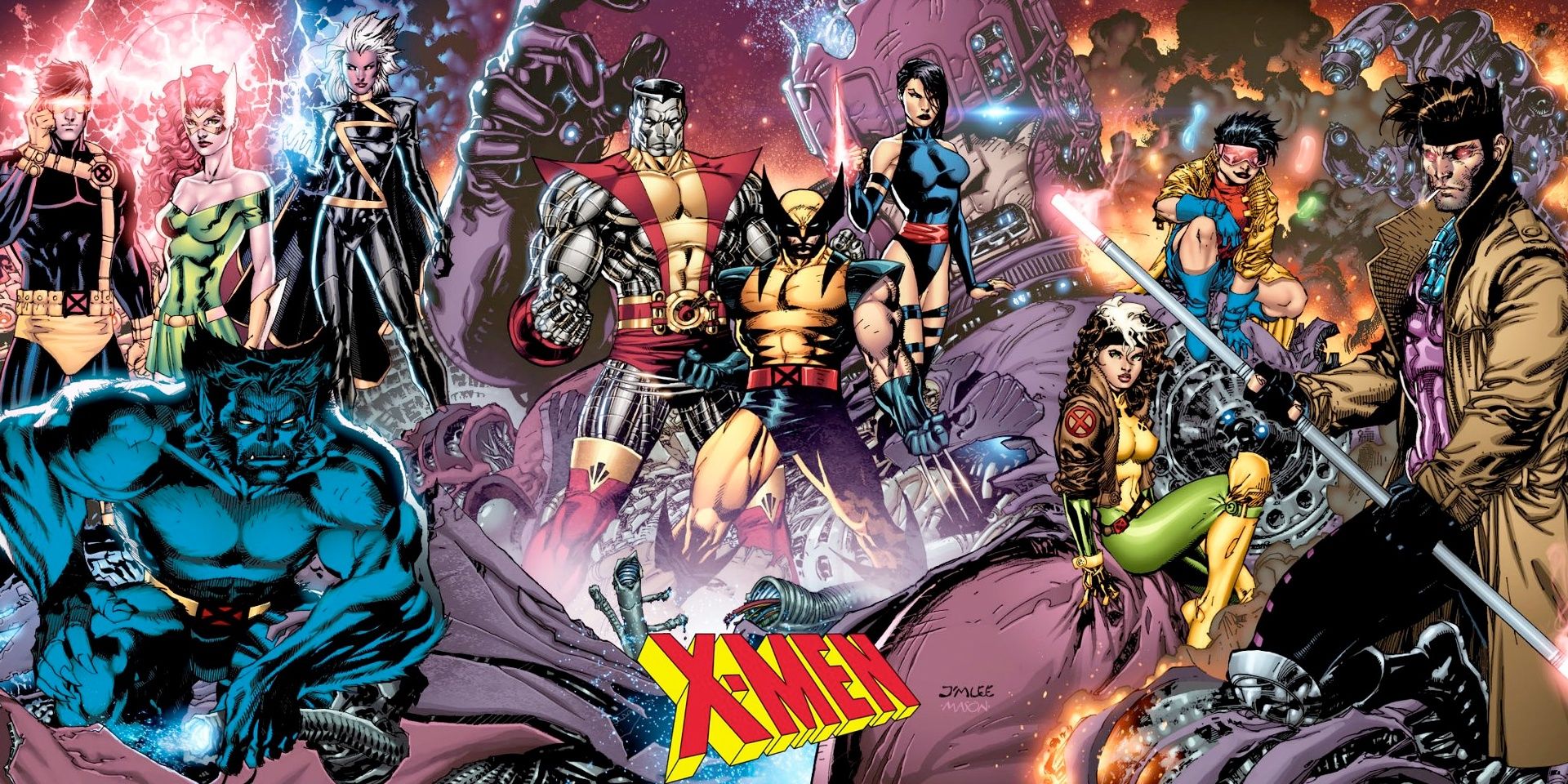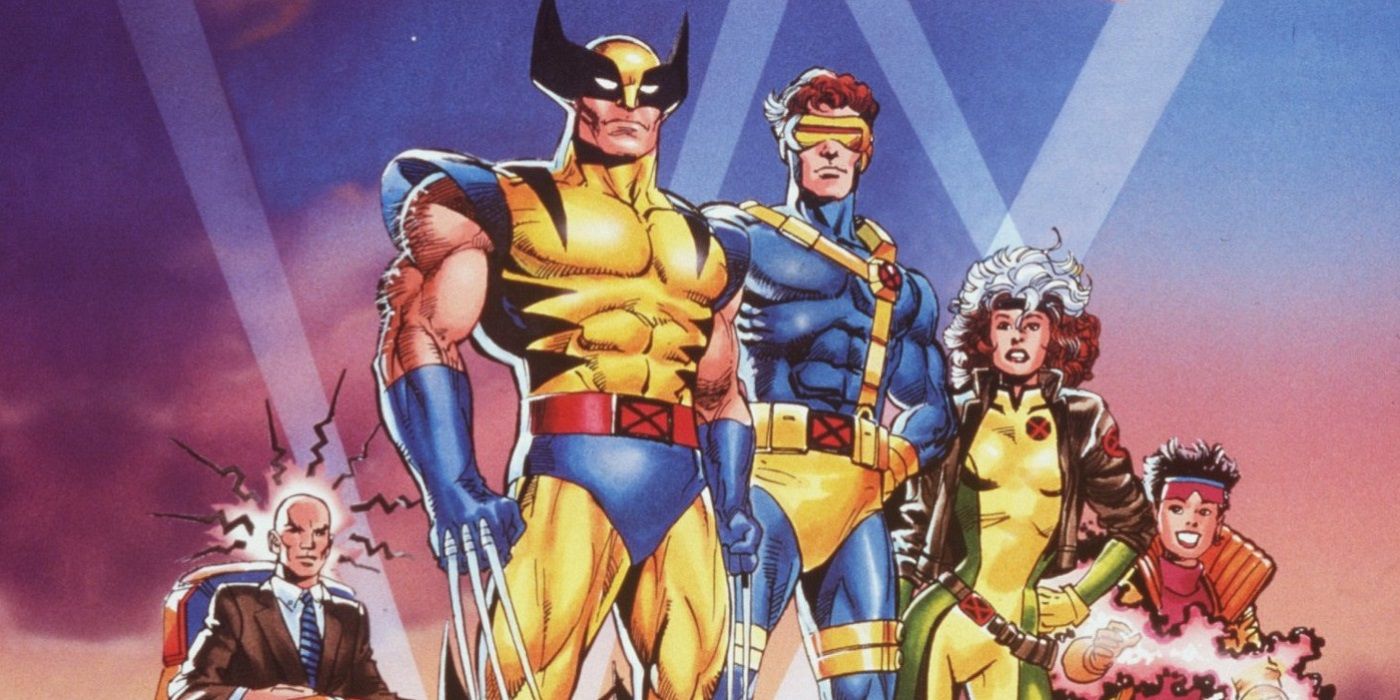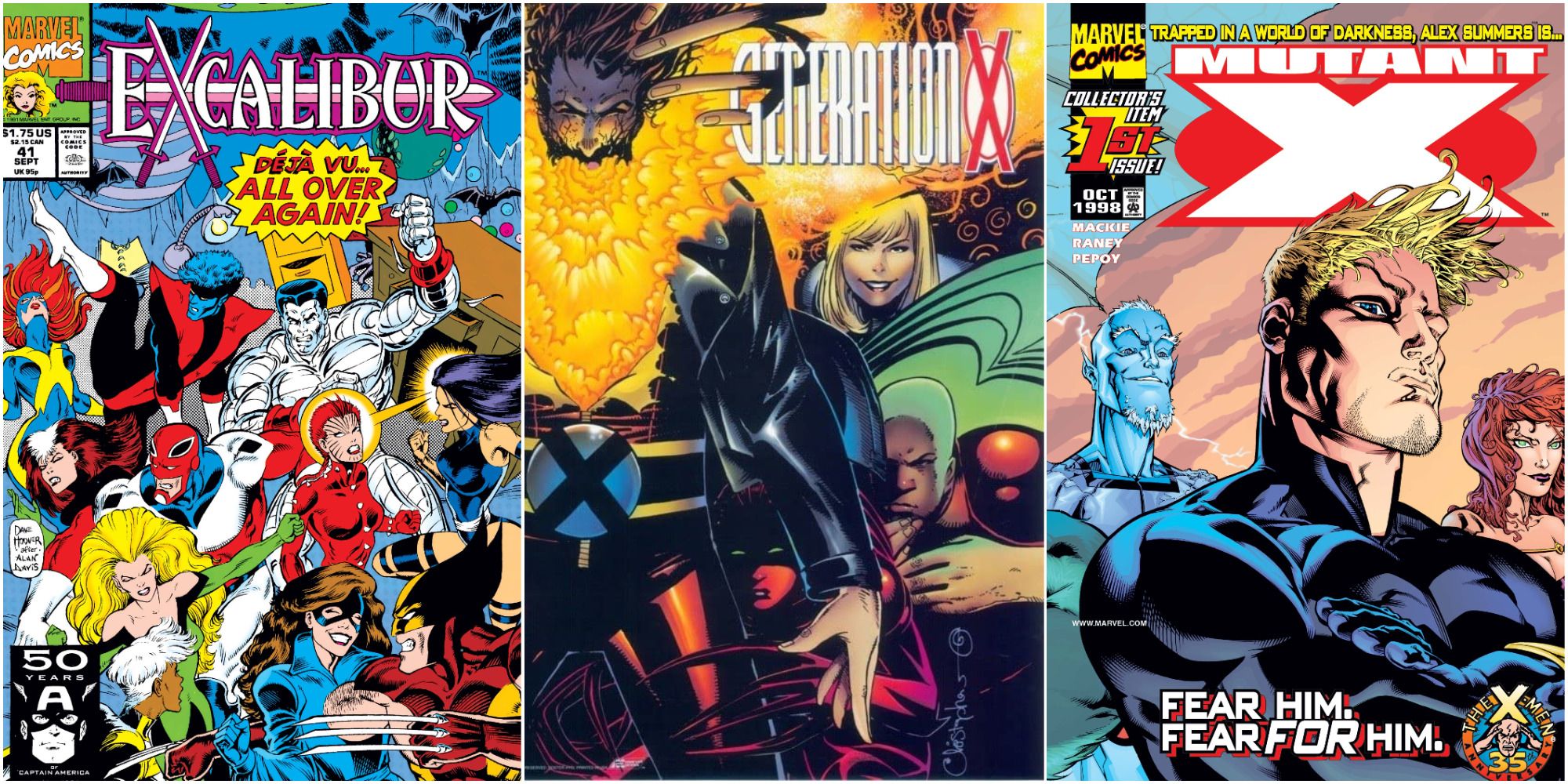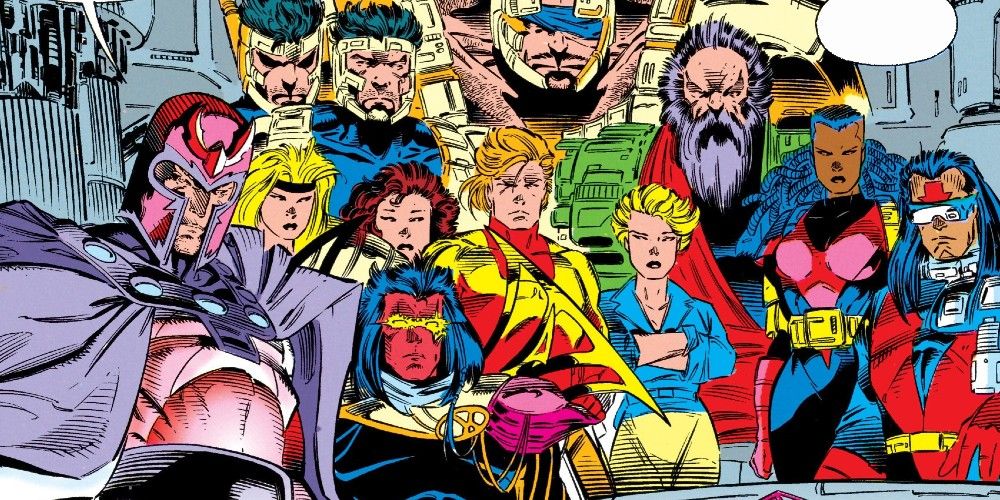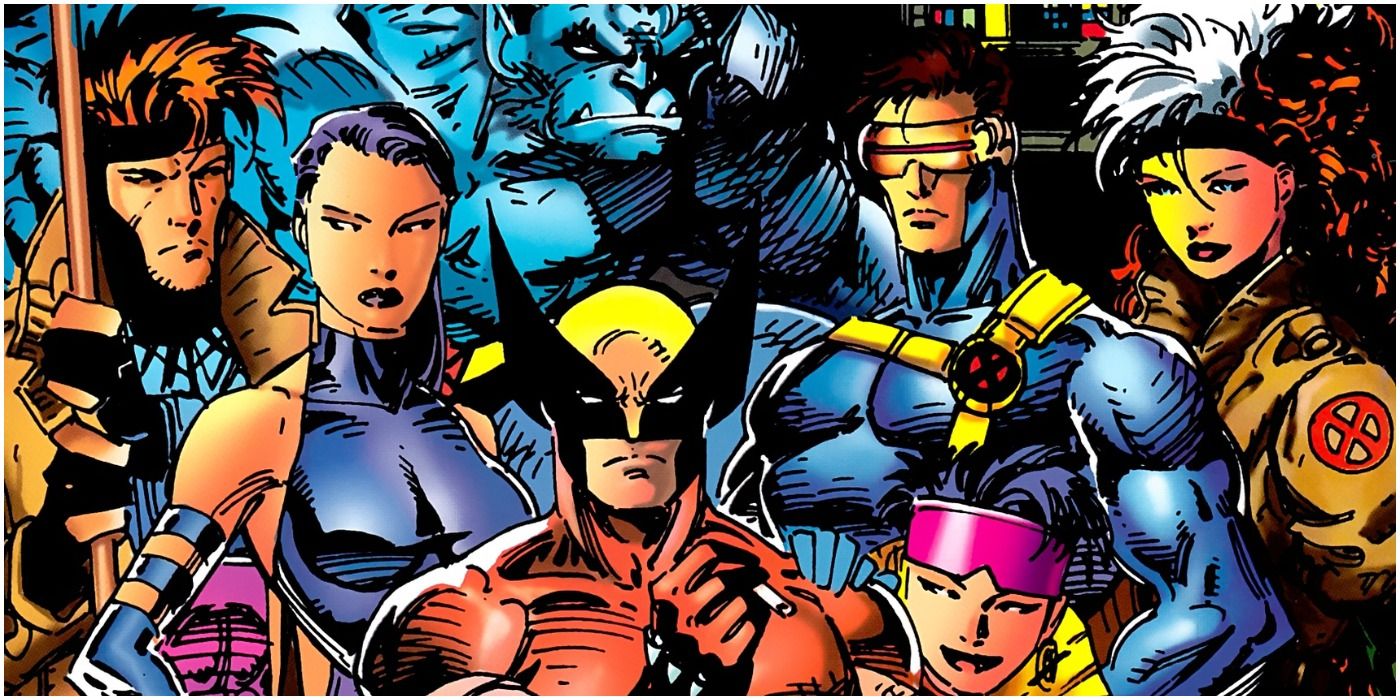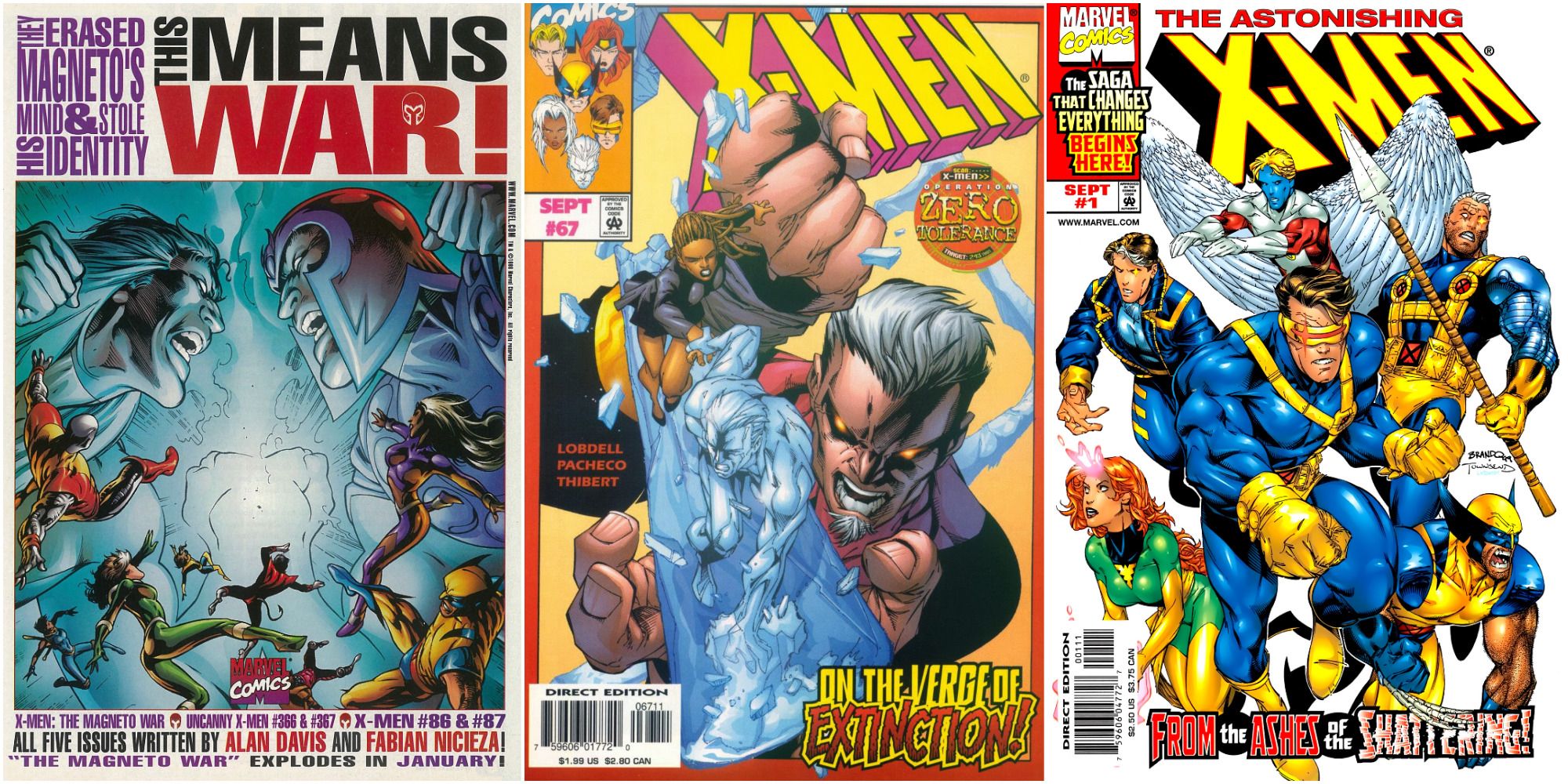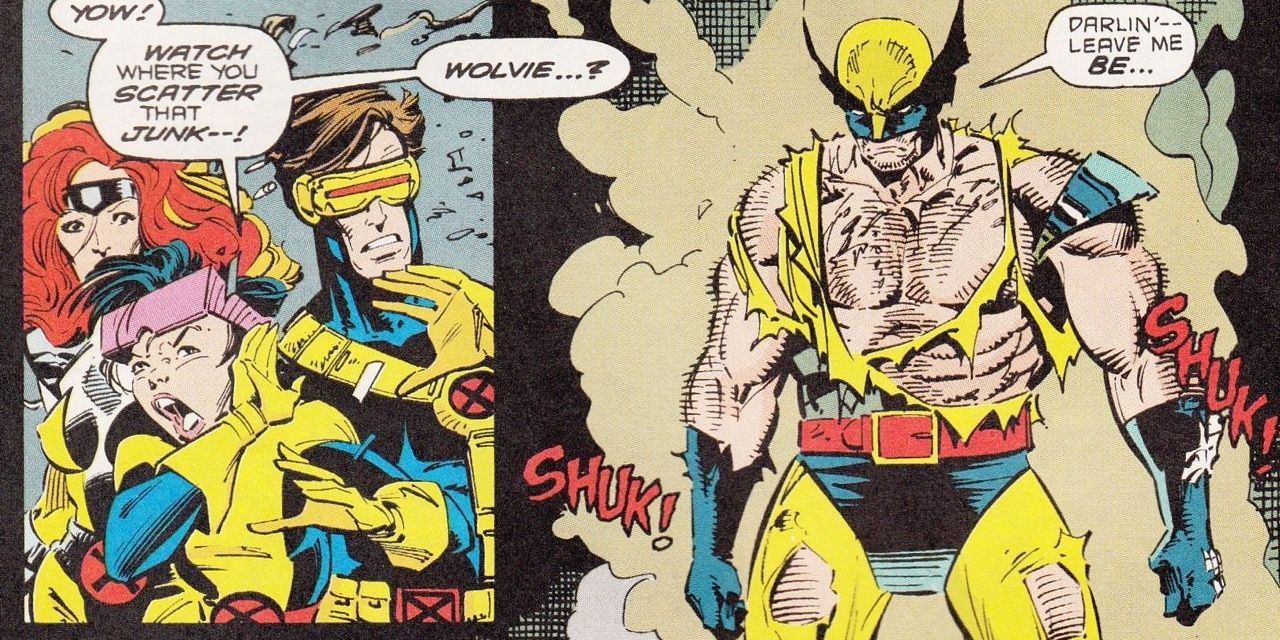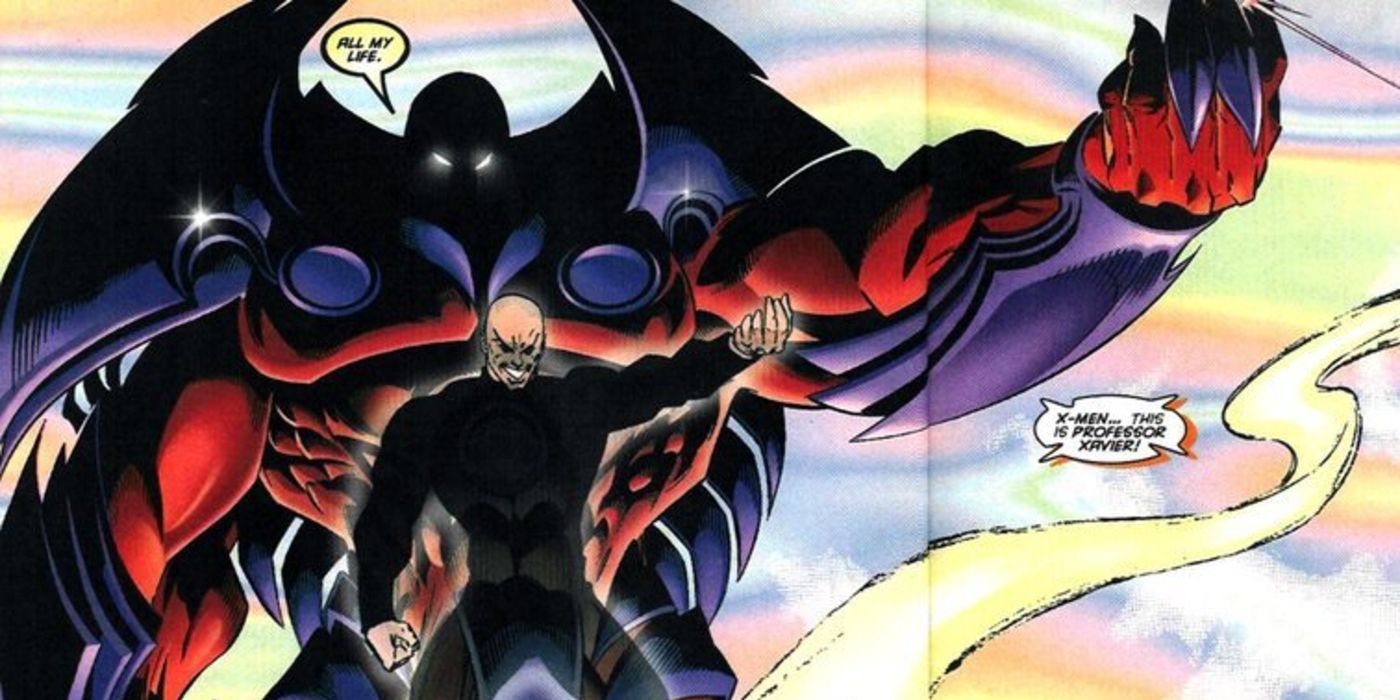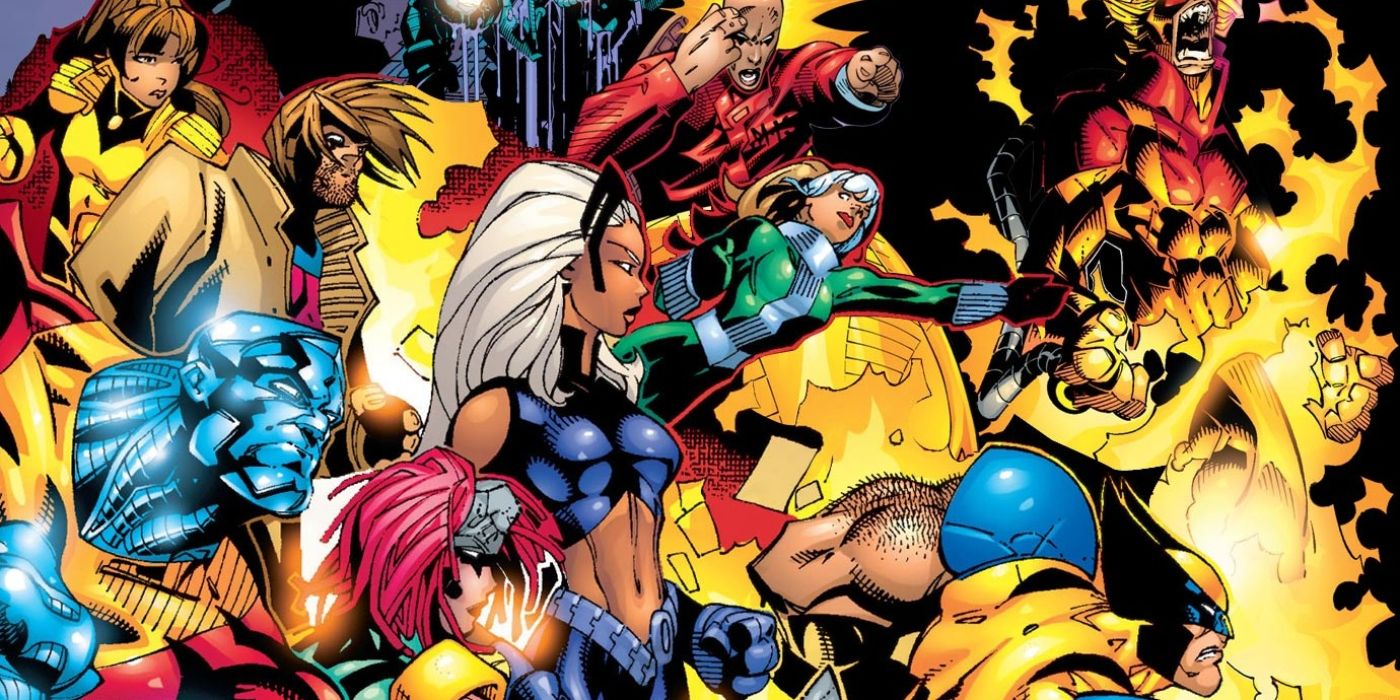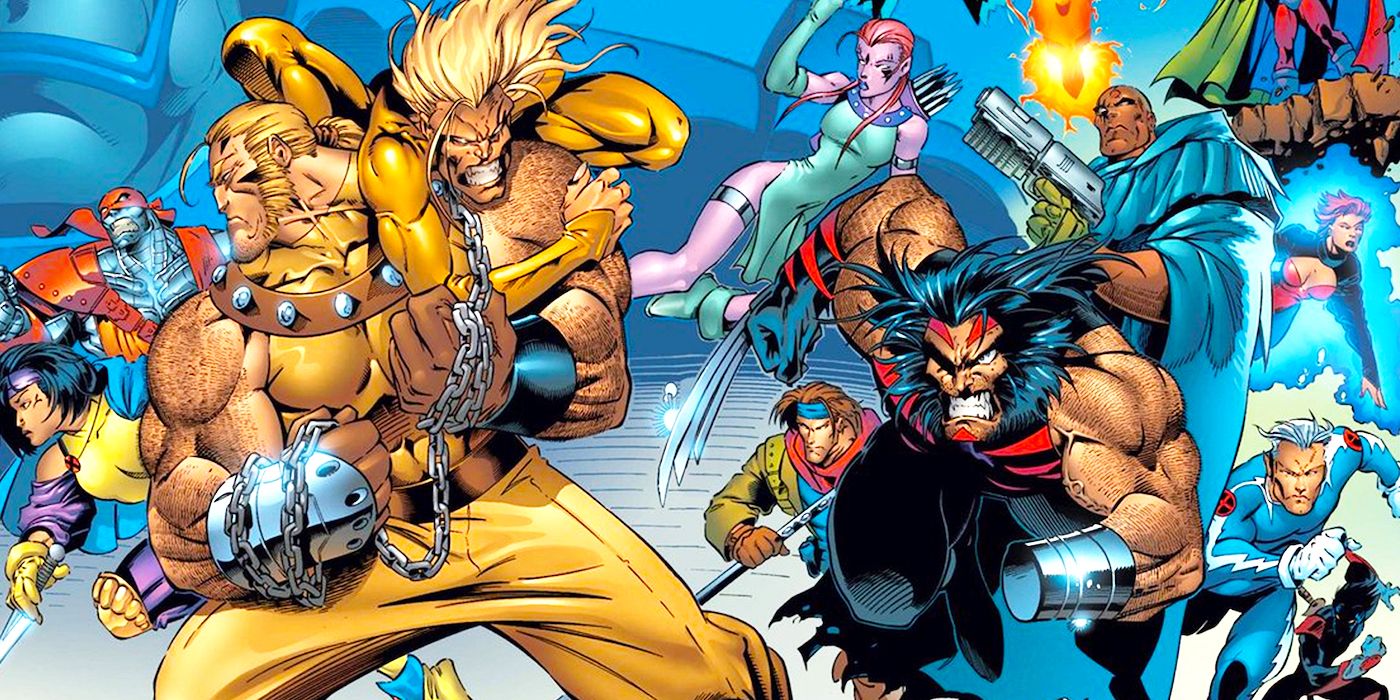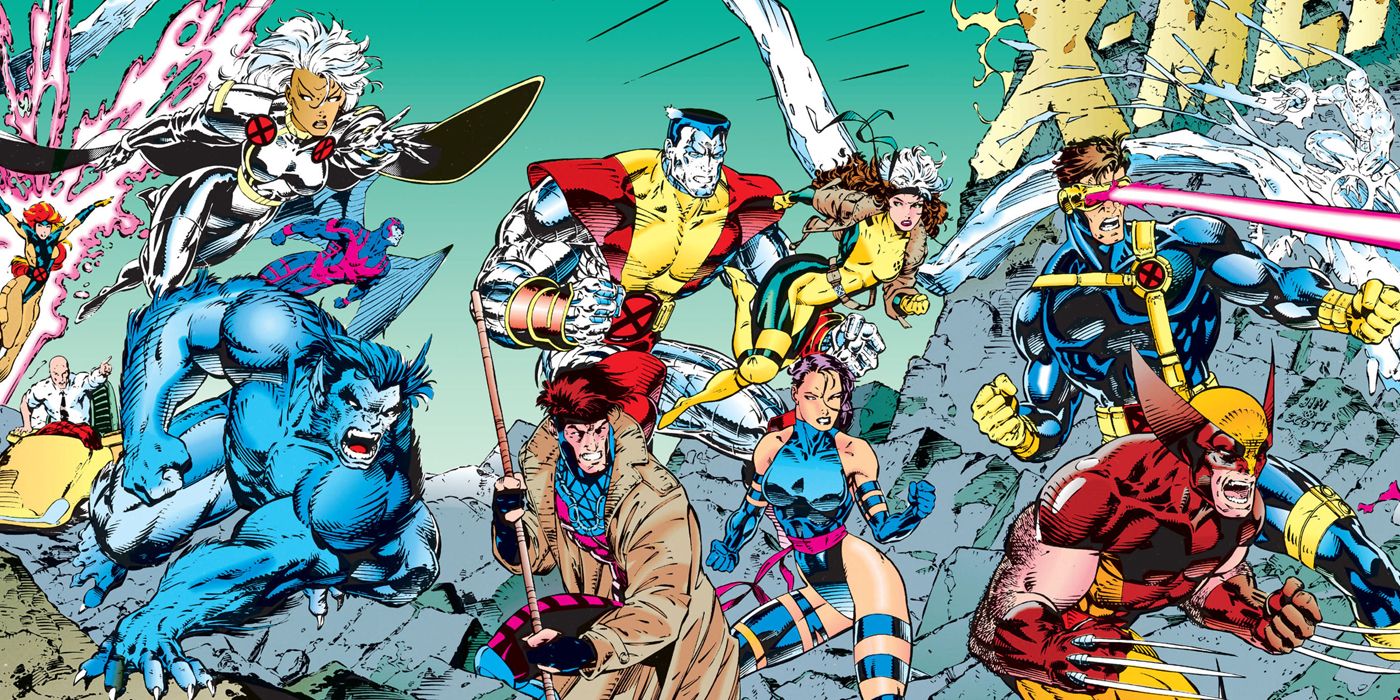The X-Men are one of the biggest franchises in pop culture, vastly overshadowing most Marvel properties that aren't the Avengers or Spider-Man. A massive reason for this is the groundwork laid in the 90s. For the comics industry, there were dizzying highs and terrifying lows, but one property remained steady during the tumultuous time: X-Men.
They were the biggest sales juggernaut in the land and with Marvel suffering bankruptcy in the mid-90s, X-Men kept the ship afloat. While it can be argued that the X-Men have had more fruitful periods before and after the 90s, it was was the decade that defined the franchise.
10 The X-Men Cartoon Brought The Team Into The Homes Of Kids Who Didn't Read Comics
In the 90s, superheroes weren't the cultural juggernaut they were today but they did make appearances outside of the comic stores and spinner racks. Cartoons were a place where superheroes thrived and X-Men quickly became one of the biggest of its kind. Every Saturday morning, kids gathered around the TV to see the comic-inspired adventures of their favorite mutants.
X-Men was a much better gateway to comics than modern superhero movies and TV shows because it did a great job of adapting a lot of classic comic stories. It also made sure that a whole generation of children grew up loving the team, something that would pay off when X-Men films began rolling out.
9 There Were More Ongoing X-Men Series Than Any Other Big Two Franchise
When the 90s began, there were five X-Men books: Uncanny X-Men, X-Factor, New Mutants, Excalibur, and Wolverine. After the explosion of popularity that 1991 represented for the X-Men, that number started to rise. New Mutants morphed into X-Force, Generation X would become the default teen mutant book, and Mutant X would present an alternate universe take on the team.
When characters like Spider-Man, Batman, and Superman had four books, the X-Men topped out at nine ongoing books at the height of their popularity, along with multiple miniseries. The X-Men ran the table, something that wouldn't happen again until the Krakoa era.
8 Scores Of Mutant Heroes And Villains Were Introduced
New characters aren't exactly prevalent in the modern comic industry but things were very different in the 90s. Marvel was always looking for the next big hero or villain and the X-Men books were ground zero for that. It seemed like every other month, a new hero or villain was being introduced in one of the books.
With so many X-Men books, new characters were constantly popping up to populate them, both on the rosters and as antagonists. The X-Men were easily the most fruitful franchise in comics. And while not every character was a winner, the sheer volume of them was impressive.
7 The Blue And Gold Teams Were Introduced
As 1991 opened, the X-Men had gotten a bit unwieldy. Longtime writer Chris Claremont was a master of juggling characters but he was leaving. Besides that, Marvel knew that two X-Men books would sell better than one, so they split up the massive group into the Blue and Gold teams. These two incarnations of the X-Men became two of the most iconic rosters in the team's history.
The Blue team was stacked with the most popular character like Wolverine, Psylocke, Gambit, and Rogue but the Gold Team was no slouch, with popular mainstays like Storm, Jean Grey, Bishop, Iceman, and Colossus. The split team era paid off, allowing creators to cover the gamut of X-Men stories in more digestible packages.
6 There Are A Lot Of Forgotten Gems Among Their 90s Output
90s comics often get a bad reputation and that can be hard to argue with. The decade saw Marvel embrace a style over substance approach that mimicked the works of the prodigal Image Seven; writing wasn't exactly important. However, there are still some great Marvel comics from that time, and a good portion of them are X-Men.
90s X-Men stories have a lot of forgotten classics in there, stories that still hold up to this day. X-Men books always had some of Marvel's best artists and writers on board in the 90s, giving the stories a quality that other Marvel books didn't have at the time.
5 Wolverine Eclipsed The Greats In Popularity In The 90s
Wolverine is one of Marvel's greatest heroes but it was a long road from his first appearance in The Incredible Hulk #181 to this point. His stature kept increasing throughout the 80s, but the 90s was when he truly hit his stride. His solo book was an established bestseller, often outselling Spider-Man, Superman, and Batman books as well as every other solo Marvel hero, and he was usually the focus of the X-Men books.
The 90s was when Wolverine truly became one of Marvel's biggest solo stars, a distinction he still holds today. He was everywhere during the decade but his home was with the X-Men, their popularity feeding off each other in a symbiotic circle.
4 X-Men Events Were The Biggest Marvel Events
Marvel's event style was still in its infancy in the 90s. It kicked off in epic fashion with the one-two punch of Infinity Gauntlet and Infinity War but the third part of that trilogy, Infinity Crusade, underwhelmed. Marvel was also putting out crossovers in related families of books but the biggest ones were always the X-Men events.
X-Men events drove sales and received fan acclaim like no one else in the 90s. Even big events like the Onslaught storyline, which would have massive repercussions throughout the line, started out as X-Men centric, as the name brand had the most eyes on the story.
3 The Biggest Artists Were On The X-Men Books
Marvel has been home to a lot of amazing artists, with the publisher's 90s artists going on to become some of the biggest ever. The vast majority of them all had one thing in common: they worked on the X-Men books. Talents like Jim Lee, Rob Liefeld, Whilce Potracio, and Marc Silvestri were all on X-Men books when they left for Image, breaking records before leaving. And Marvel found some worthy replacements for them.
Artists like Andy Kubert, Adam Kubert, Leinil Yu, Chris Bachalo, Carlos Pacheco, and Joe Madureira all came to prominence because of their X-Men runs. All of them would go on to huge things in the industry in the future, their X-Men runs nabbing them legions of fans.
2 The Age Of Apocalypse Became The Quintessential Alternate Universe Comic
The Age of Apocalypse is one of the most beloved X-Men stories of all time. This epic put all of the ongoing X-Men book storylines on pause to bring readers to a dystopian alternate universe ruled by Apocalypse, where the X-Men were the world's only hope. It could have been a massive failure but fans loved it, cementing its place in comics history.
Few alternate universe stories before or since have the length and breadth of The Age of Apocalypse. It was a watershed moment for the X-Men and Marvel, one which they've tried to replicate many times over the years with little success, proving just how great the story is.
1 X-Men #1 Is The Best Selling Comic Of All Time
1991's X-Men #1 has a lot of distinctions. It was longtime X-Men writer Chris Claremont's last X-Men story until the year 2000. Artist Jim Lee introduced new costumes for the time and the Blue and Gold team split began here. It kicked off one of the best Magneto stories ever, introducing the Acolytes, a team that would become his main servants throughout the 90s.
However, all of that pales compared to the book's sales. X-Men #1 sold eight million copies, becoming the best-selling comic of all time and one of the most important Marvel comics of the 90s. This cemented the 90s as the franchise's biggest decade, setting them on the course to be the stars of the decade.

